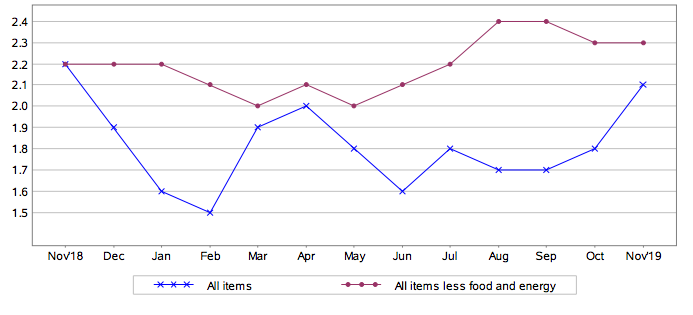The US Bureau of Labor Statistics released its monthly data, stating that the Consumer Price Index for All Urban Consumers (CPI-U) rose 0.3 % in November on a seasonally adjusted basis, after rising 0.4% in October.
Despite historically low unemployment coupled with tariffs on Chinese imports, this signals that inflation remains in check.
American households paid more for energy, food, rent, and healthcare in November.
The Energy Index
The price of gasoline increased by 1.1%, and the other major energy component indexes also increased 0.8% in November. Other major energy categories also saw an increase, with electricity edging up 0.3% and natural gas increasing 1.1%.
Over the past 12 months, the energy index has decreased 0.6%. Gasoline prices declined 1.2% over the past year, and the fuel oil index fell 6.7% over the past 12 months. Conversely, the natural gas index rose 1.1% and the electricity index increased 0.5% over the year.
The Food Index
Food prices edged up 0.1%, rising for a third straight month, with the categories for both food at home and food away from home both increasing over November.
Food at home increased 0.1%, after seeing a 0.3% increase in October. Likewise, the food away from home index increased 0.2%.
Over the last 12 months, the food at home index increased 1.0%. The food away from home category also increased 3.2% over the past 12 months.
All Items Less Food And Energy
The shelter index rose 0.3% in November. The index for rent also rose 0.3%, while the index for owners’ equivalent rent increased 0.2% over the month. Over the past 12 months, the index for shelter has increased 3.3%. The medical care index increased 0.3 percent. Over the past year, the index for medical care rose 4.2%.
Overall, the index for all items less food and energy rose 2.3% over the past 12 months.





